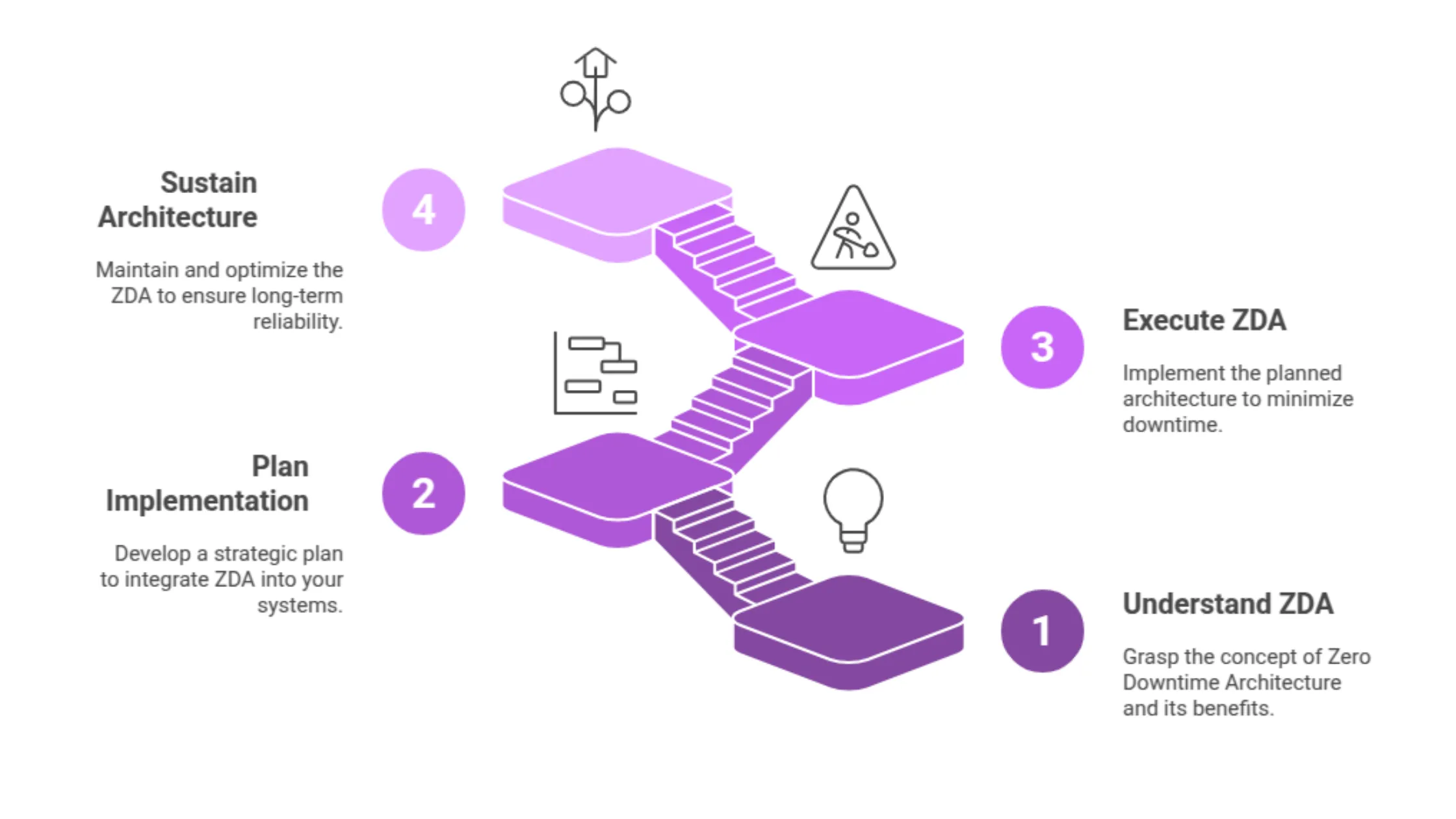April 21, 2025
Zero Downtime Architecture: How Platform Engineering Future-Proofs Systems

By Rakshit Menpara
Improwised Technologies Pvt. Ltd.
In today’s always-on digital world, downtime is more than a nuisance; it’s a revenue-killer and a brand liability. Whether you’re running a fintech platform, a SaaS business, or a global e-commerce store, high availability is a must. That’s where Zero Downtime Architecture (ZDA) comes in, and more importantly, where Platform Engineering becomes your long-term strategy to implement and sustain it.

The Problem: Downtime is Costly
-
Amazon’s 2013 downtime reportedly cost them over $66,000 per minute.
-
Gartner estimates the average cost of IT downtime is $5,600 per minute.
-
For modern applications, user expectations are shaped by the likes of Netflix, Google, and Amazon. Anything less than 24x7 availability is unacceptable.
The Role of Platform Engineering
Platform Engineering is the discipline of building and maintaining internal developer platforms (IDPs) that provide golden paths for application teams to build, test, and deploy software with safety, speed, and reliability.
When done right, it enables:
-
Standardized tooling and practices
-
Automated infrastructure management
-
Self-service for developers
-
Resilience baked into the architecture
Architectural Pillars of Zero Downtime
Here’s how Platform Engineering helps build systems that just don’t go down:
1. Immutable Infrastructure and Declarative IaC
By using tools like Terraform, Pulumi, or Crossplane, infrastructure is defined as code and provisioned in a predictable, repeatable way. Combined with GitOps tools like Flux or ArgoCD, changes are made declaratively and rollbacks are quick and safe.
2. Blue-Green and Canary Deployments
Platform teams bake in deployment strategies into CI/CD pipelines:
-
Blue-Green Deployments: Route traffic between two identical environments to ensure zero-impact updates.
-
Canary Deployments: Gradually shift traffic to a new version, with automatic rollback if metrics degrade.
3. Service Mesh and Smart Routing
With tools like Istio, Linkerd, or Consul, platform teams can decouple routing logic from application logic. Smart routing, retries, circuit breakers, and gradual rollouts become configuration tasks rather than code changes.
4. Auto-Healing and Observability
Platform Engineers integrate observability tools like Prometheus, Grafana, Loki, or OpenTelemetry across environments. Combined with Kubernetes’ self-healing capabilities, platforms can automatically detect and recover from failures.
5. Chaos Engineering and Resilience Testing
Proactive resilience is enforced by injecting failure through tools like Chaos Mesh or LitmusChaos. This builds confidence in the system’s ability to survive unexpected events.
6. Distributed Systems and Multi-Zone Deployments
Using Kubernetes and cloud-native patterns, workloads are distributed across zones and even regions. Platform teams automate this with scripts and policies that ensure redundancy and failover are built-in.
Real-World Example: SaaS Platform Uptime Boost
A mid-size SaaS company adopted Platform Engineering practices to achieve 99.99% uptime across regions. Their platform team:
-
Introduced GitOps for all infrastructure and deployment updates
-
Replaced manual CI/CD pipelines with ArgoCD and progressive delivery
-
Implemented a service mesh for secure communication and smart routing
-
Added real-time observability to catch anomalies before they escalated
The result? Zero downtime deployments became the default, not the exception.
Future-Proofing with Platform Engineering
Zero downtime is not a milestone, it’s a continuous journey. Platform Engineering provides the toolkit and mindset to:
-
Abstract infrastructure complexity
-
Ensure compliance and security by default
-
Empower developers with safe, fast delivery paths
-
Handle scale, failover, and recovery at the platform level
As systems grow more complex, the platform becomes the foundation of digital reliability. If you want to future-proof your architecture, Platform Engineering isn’t optional—it’s essential.

November 19, 2025
Unlocking Developer Potential: How Platform Engineering Transforms Developer Experience

By Shyam Kapdi
Improwised Technologies
Pvt. Ltd.


By Shyam Kapdi
Improwised Technologies
Pvt. Ltd.

November 14, 2025
How to Build a High-Impact Internal Developer Platform: Step-by-Step Blueprint, Tools, and Best Practices

By Shyam Kapdi
Improwised Technologies
Pvt. Ltd.
Optimize Your Cloud. Cut Costs. Accelerate Performance.
Struggling with slow deployments and rising cloud costs?
Our tailored platform engineering solutions enhance efficiency, boost speed, and reduce expenses.
